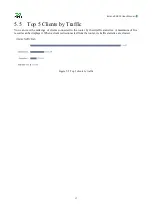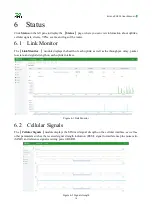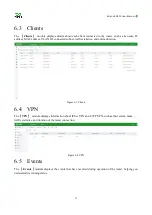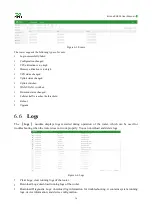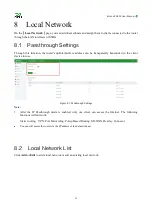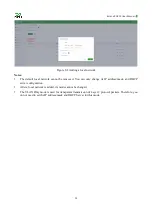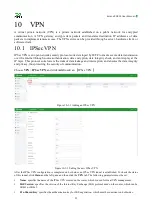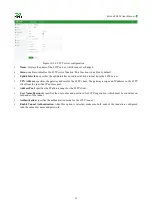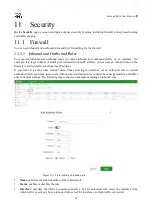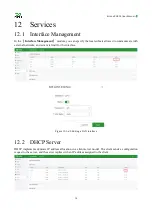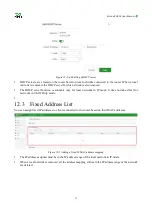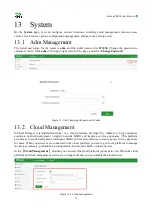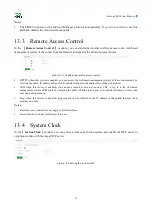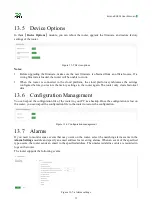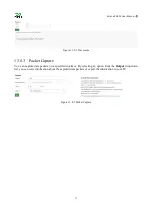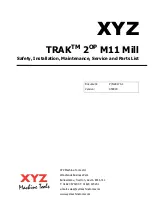
InHand ER805 User Manual
27
Protocol
: specifies the protocol type of packets to be matched. Options are
Any
,
TCP
,
UDP
,
ICMP
,
and
Custom
.
Source
: specifies the source IP address of packets to be matched. You can enter an IP address or retain
the default option
Any
.
Destination
: specifies the destination IP address of packets to be matched. You can enter an IP address
or retain the default option
Any
.
Behavior
: specifies the action taken for packets matching the rule. Options are
Permit
and
Deny
.
Inbound rule: controls external traffic received by the router. By default, all external traffic is denied.
Outbound rule: controls traffic sent out through the router. By default, all outbound traffic is permitted.
You can reprioritize inbound and outbound rules on the rule list.
11.1.2 Port Forwarding
After a port forwarding rule is configured on an interface of the router, the router forwards data traffic
arriving at this interface to the specified port on the target internal client. In this way, services deployed on
the intranet are available for external users. The port forwarding feature allows the router to forward packets
of different ports to different private IP addresses and ports, so that the same public IP address can be used to
access multiple servers. For example, if external users need to access the service with port 1024 on the client
with the IP address 192.168.2.10, you can map this port to port 1024 on WAN1. Then, external users can
access data of this service on the client by entering https://IP address of WAN1:1024 in the address box of
their web browser.

